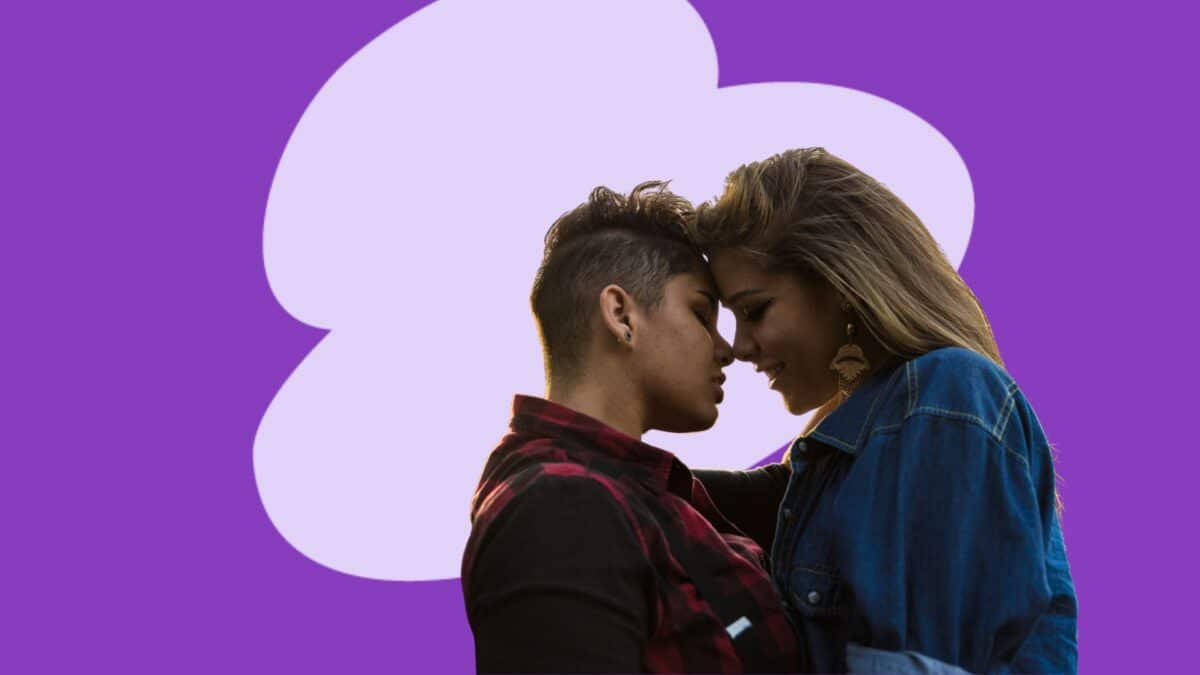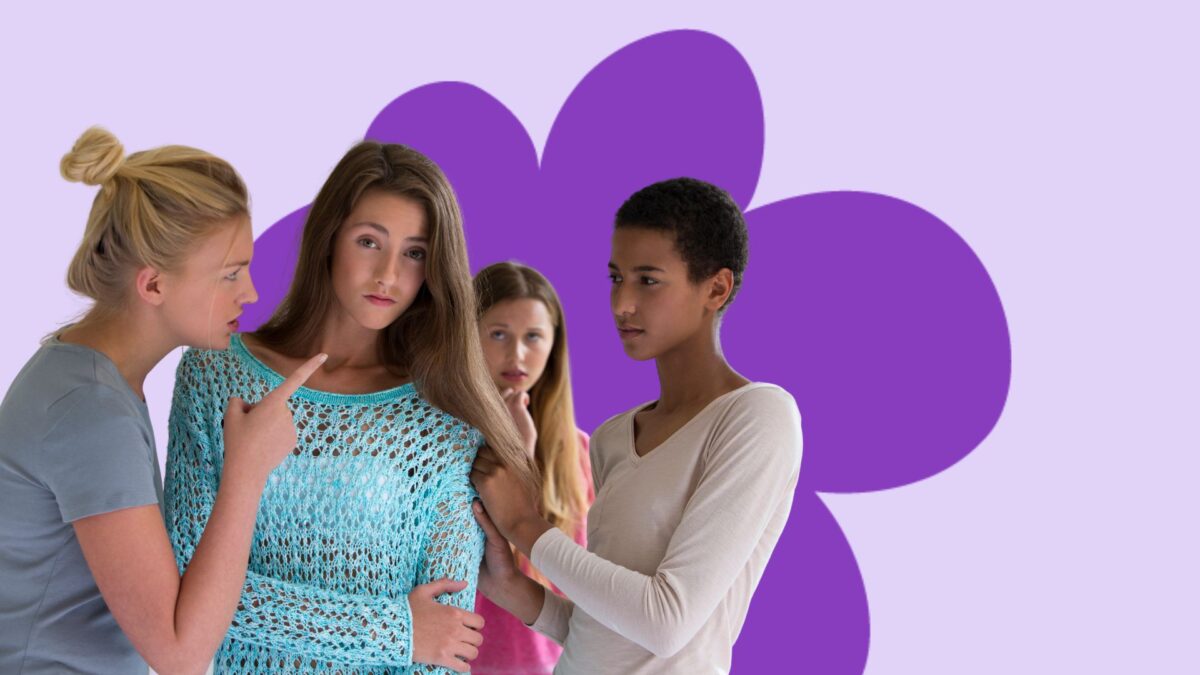Okay, so you want to learn about queer history, huh? Well, good news! You’ve come to the right place! Whether you’re part of the queer community or you’re an ally, it’s important to understand the connection between queer history and queer mental health.
History Of The Word ‘Queer’
Back in the late 19th century, “queer” insinuated sexual deviance. By the 20th century, it was used alongside other slurs to refer to men who were seen as being too feminine or gay — and it stayed that way until the 1980s.
If you ask your parents what the word “queer” means, they’ll likely say it’s a derogatory and outdated term. And back in their day it totally was an insult! But during the 80s, activists and members of the LGBTQIA2S+ community started to use ‘queer’ as a way of reclaiming a term once used to demonize and “other” them from society at large.
Today, it helps to include those who the acronym forgets. Some in the LGBTQIA2S+ community still see “queer” as problematic or controversial, so they prefer not to use it. For some, it is a positive or neutral identifier for the non-cis/hetero-ness of their sexuality or gender.
Queer Studies
Queer studies is an academic specification that focuses on the issues related to those in the LGBTQIA2S+ community. The studies relate to intersectional feminism, race, sexuality, gender, gender dysphoria and basically any topic related to being a queer person.
Queer studies differs from queer theory (which is the viewpoint and lens through which one considers and challenges all topics). It began as a study on LGBTQIA2S+ history and theory, but has now expanded to include discussions relating to biology, sociological issues, psychology, anthropology, history, ethics, political science and more.
Queer Theory
Queer theory is a critical theory and perspective that came from the academic area of queer studies. It challenges societal and heteronormative constructs that exclude or limit the inclusion of those in the queer community. It began back in the 1980s with queer studies and was inspired by the ideals of philosopher Michel Foucault, who saw sexuality as a social construct.
Since the first queer theory conference in 1990, queer theory has been gaining recognition, traction and legitimacy as an academic specialization and critical theory.
Queer Culture
It’s important to understand that queer culture is more than drag queens on reality competition shows. It comes from a need to survive in a society that still challenges the community’s existence, rights and freedoms. Queer culture is created by, and for, LGBTQIA2S+ people.
Culture is described as “the characteristics and knowledge of a particular group of people, encompassing language, religion, cuisine, social habits, music and arts.”
So, with that definition of culture in mind…queer culture refers to, and encompasses, works by queer people, including music and arts, social scenes and language. It also refers to the collective knowledge of queer history and events, social movements, and historical and contemporary figures (politicians, drag queens and kings, and other pop culture icons).
Mental Health In LGBTQ History
It’s horrifying to know that up until as recently as the 70s, gay bars were frequently raided by police and practicing homosexuality was illegal. The attitude towards those in the queer community was (and, somewhat still is) that of distaste and contention. Today’s Pride parades are the resulting celebration of an iconic turning point in LGBTQ+ history. They honour the Stonewall Riots of 1969 — riots that began after a police raid of the Stonewall Inn in New York City.
Another monumental change for queer rights and mental health came in 1973 with the release of the DSM-3 (Diagnostic and Statistical Manual of Mental Disorders). Homosexuality was no longer listed as a mental illness in the medical field.
And, just A FEW YEARS AGO, in 2019, the World Health Organization FINALLY stopped classifying being transgender as a mental illness.
This is why it is so important to educate people and empower members of the LGBTQIA2S+ community.
Queer History Resources
Learning about queer history helps to connect people of all orientations, genders and identities. Knowing the importance of community and why it started can help a person connect to others and understand themself on a deeper and more meaningful level than they might not have ever thought possible. However you identify, it is important to acknowledge the history of the LGBTQIA2S+ community in order to better understand and support the community today.
These films, essays, novels, websites, and a podcast will help you learn more about the community and the importance of Pride month.
1. The Death And Life Of Marsha P. Johnson
This 2017 film on Netflix tells the story of the drag queen and trans woman of colour who helped lead the fight for queer liberation – Marsha P. Johnson. While this documentary centres on the mysterious death of Marsha P. Johnson, it also discusses queer culture and queer history as it happened back in the 60s, 70s, and 80s.
The film highlights how really fucking hard it was for queer people! Queer liberation wasn’t what it looks like today. While there’s still so much work to be done in the fight for equal rights, the film highlights just how far the queer community has come. You can watch this film on Netflix.
2. The GLBT Historical Society
The Gay, Lesbian, Bisexual, Transgender (GLBT) Historical Society is a recognized leader in queer public history. They strive to make queer history accessible and available to everyone and “promote understanding of LGBTQ history, culture and arts in all their diversity.” We LOVE that!
And you know what? They definitely practice what they preach because you can find a plethora of information on their site. There are a number of oral history projects to discover, digital collections to look through, and even a physical museum that you can visit! But not all of us are able to visit their physical space, so their online resources will have to do until we can be there in person!
Head to their website here!
3. Teaching LGBTQ History
This website is all about LGBTQ+ history! This site is an amazing resource for people who want to learn more about queer history, and those who want to teach it!
There are a number of lesson plans and resources for professionals and educators. And, a timeline of American history with important queer history markers. Think of this as a mini version of a queer studies course!
Visit their website to learn more!
4. History of Lesbian, Gay, Bisexual and Transgender Social Movements
In an essay published by the APA website, author Bonnie J. Morris, PhD, details the history of social movements within the queer community (Yes, yes, yes, we know. You read the title!). This super-duper detailed essay covers a number of topics and events that are important and integral to the history and foundation of queer culture.
Click here to read the essay!
5. Making Queer History
This site is fuuuuullllllll to the brim of incredible articles, videos, and resources. They also give you a beginner’s guide to learning about queer history! There’s so much to cover and it can be overwhelming to know where to start looking or even WHAT to start learning about.
This site helps break down the steps to learning about the LGBTQ+ community. And, it gives you great resources to start reading and absorbing.
Check out their advice and resources!
6. Before Stonewall
Before Stonewall is a documentary film about the often unheard queer history that came before the Stonewall Riots.
This was a particularly difficult film to make because the directors had to search and comb through the archives of a forgotten time and subculture that society wanted to hide and shun away. But what they did find helped create an incredible piece of historical documentation that can now be watched on Amazon Prime.
7. Making Gay History Podcast
If you want to learn about important figures from LGBTQ+ history, you have found the right podcast, my friend! Host Eric Marcus focuses each episode on an important figure within the queer community. Eric highlights the heroes and champions of the liberation of an entire group of people.
The podcast includes audio interviews Eric conducted decades ago. With 8 full seasons (AND BONUS EPISODES!!!) you’ll learn all about queer history.
Listen to their podcast here!
8. Borderlands/La Frontera: The New Mestiza
In this semi-autobiographical novel, Borderlands/La Frontera, Gloria E. Anzaldúa talks about life growing up on the Texas/Mexico border. Anzaldua — a writer and American scholar of Chicana cultural theory, feminist theory, and queer theory — recounts the oppression of Chicana lesbians, and the gender roles and expectations that came along with being a woman during this time, and in this area.
Within this book, she develops the idea of a higher consciousness that helps fight against patriarchal expectations, breaking down the barriers in place that enforce gender roles and norms — all while simultaneously exploring a life caught between two cultures.
It’s important to know and understand queer history because it’s part of WORLD history! It’s so often swept under the rug and forgotten about, but more people should understand queer culture, history, and theory because it matters! And if you’re part of this awesome and powerful community, remember that YOU matter. We love you!










